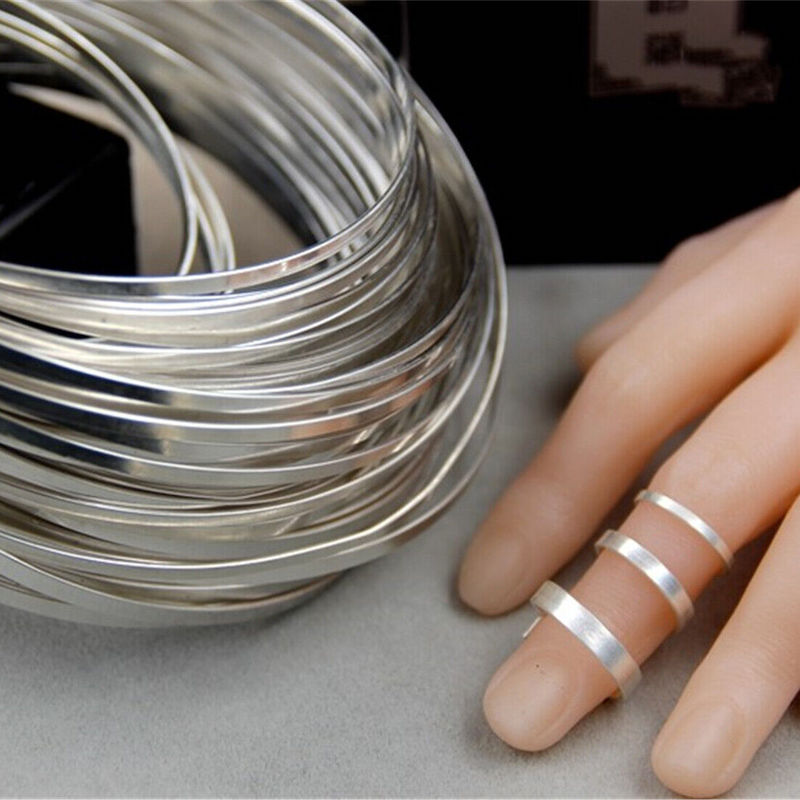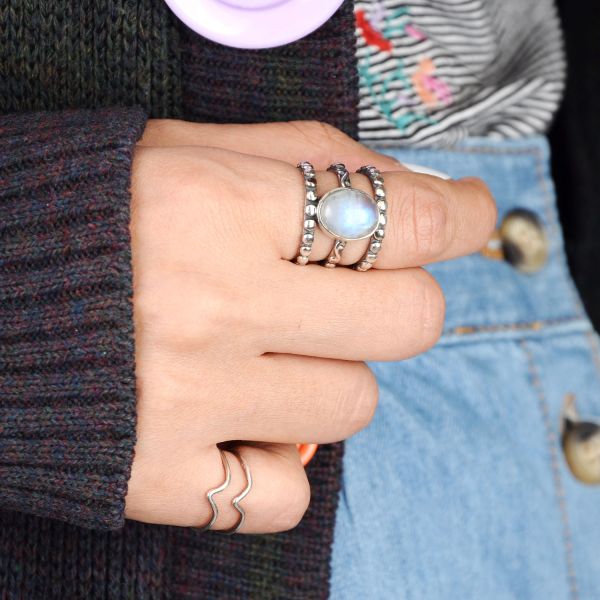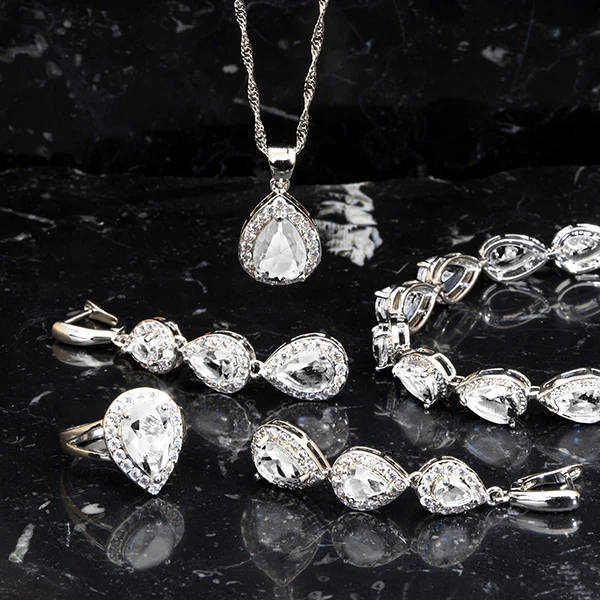What is Silver Plating?
Can silver plated jewelry tarnish? Silver plating involves covering a base metal with a thin layer of silver. This process gives the appearance of solid silver while using less of the precious metal. It makes jewelry more affordable. The base metal can be brass, copper, or nickel, among others. Once plated, the piece looks like a full silver ornament. However, because the silver layer is thin, it can tarnish over time. Tarnishing happens when silver reacts with sulfur compounds in the air. Silver plating is popular for items like rings, earrings, and necklaces. But, remember, even with a silver coating, the base metal’s properties affect the item’s durability. To sum up, silver plating is an economical way to get the look of silver. But it does come with the need for careful maintenance to prevent tarnish.
The Chemistry Behind Tarnishing
When discussing why can silver plated jewelry tarnish, it is essential to understand the chemistry involved. Tarnish is a dulling layer that forms on silver and silver plated items. This layer comes from a chemical reaction between silver and sulfur-containing substances in the environment.
Understanding the Tarnishing Process
Tarnish on silver plated jewelry is primarily due to silver sulfide formation. Silver sulfide is black. It develops when silver reacts with sulfur in the air or with other substances that contain sulfur, like household cleaners or cosmetics. This reaction is more rapid in areas with high humidity or pollution.
Factors Affecting the Rate of Tarnishing
Several conditions can accelerate tarnishing. Exposure to rubber, wool, and even some foods can quicken the process. The thinness of the silver plating can also influence how quickly tarnish appears, as a thinner layer may react more swiftly with environmental factors.
Impact of the Base Metal
Keep in mind that the base metal in silver plated jewelry also plays a role in the tarnishing process. Metals like copper or brass might react with the silver layer, potentially contributing to faster tarnishing. Engaging in activities that cause perspiration or letting your jewelry come into frequent contact with water can also speed up the tarnishing of silver plated items.
Visibility of Tarnish
Tarnish usually starts as a yellowing of the silver’s surface, which then turns to brown and eventually black if left untreated. Visible tarnish on your jewelry signifies that the chemical reactions have been affecting the silver plating over time.
By recognizing the chemistry behind tarnishing, you have taken the first step in protecting and maintaining your silver plated jewelry. The conversation continues with the factors that influence this process and how to manage it effectively.
Factors Influencing Silver Plated Jewelry Tarnish
Several factors can contribute to the tarnishing of silver plated jewelry. Here’s a breakdown of the key influencers:
Environment
The surrounding environment plays a significant role. High humidity and pollution levels can accelerate the tarnishing process, increasing the speed at which silver sulfide forms.
Contact Materials
Materials that come into direct contact with the silver can affect tarnishing. Rubber bands, wool fabrics, and even some types of paper can emit sulfur compounds that expedite the tarnish.
Personal Care Products
Exposure to beauty products such as lotions, perfumes, and hair sprays can lead to tarnishing. These items often contain chemicals that react negatively with silver.
Food Substances
Foods that are high in sulfur, such as eggs and onions, can also promote tarnishing, especially if the jewelry is worn while cooking or eating.
Physical Wear
The wear and tear on jewelry can remove the protective outer layer, exposing the base metal. Scratches and dents increase areas susceptible to tarnish.
Base Metal Interaction
The type of metal underneath the silver plating can have an impact. Metals such as copper and brass may react with the thin silver layer and speed up the tarnishing.
Body Chemistry
Individual body chemistry differs. Some people’s skin may contain higher acid levels, which can cause silver plated jewelry to tarnish more quickly.
Water Exposure
Frequent exposure to water, especially chlorinated or salty water, can damage the silver layer. It’s wise to remove jewelry before swimming or showering.
Understanding these factors can help you identify why your silver plated jewelry may tarnish more rapidly and take steps to mitigate the effect.
How to Identify Tarnished Silver Plated Jewelry
Identifying tarnished silver plated jewelry is essential for timely maintenance and care. Here are some signs to lookout for:
Visual Indicators
The first sign of tarnish is a discoloration on the jewelry’s surface. It often starts with a yellow tint and progresses to brown. If neglected, the tarnish becomes a distinct black layer. Check for any areas that have lost their original silver sheen.
Texture Changes
Alongside visual changes, you may feel a difference. Tarnish can create a slightly rougher texture compared to the smooth feel of untarnished silver. If the surface no longer feels slick, tarnish might be setting in.
Smell Test
Silver plated jewelry with tarnish can sometimes emit a metallic odor, distinct from the typical smell of metal. If your jewelry smells unusual, it may need to be checked for tarnish.
The Swipe Test
One simple method is to gently swipe a soft, light-colored cloth over the jewelry. If black marks appear on the cloth, this indicates tarnish on your jewelry’s surface.
Identifying tarnish promptly can save your silver plated jewelry from permanent damage. With correct identification, you can begin the cleaning process or take preventative measures to protect your treasured items from further tarnishing.
Preventive Measures to Protect Silver Plated Jewelry
Taking care of silver plated jewelry is key to extending its shine and preventing tarnish. Here are some practical tips to keep your jewelry looking like new:
Store Jewelry Properly
Keep your pieces in a dry, cool place. A jewelry box with anti-tarnish lining is best. Avoid areas with high humidity to prevent rapid tarnishing.fcan silver plated jewelry tarnish
Limit Exposure to Harsh Chemicals
Take off your jewelry before using cleaning products. Lotions, perfumes, and hairsprays can speed up tarnishing, so apply these before wearing your jewelry.
Keep Away from Sulfuric Substances
Avoid contact with rubber bands and wool, which give off sulfur that can tarnish silver. Storing silver with chalk can absorb excess moisture and sulfur.
Reduce Water Contact
Remove jewelry before swimming or bathing. Chlorine and salt can corrode the silver layer.
Handle with Care
Touch your silver plated items as little as possible. Oils and acids from your skin can affect the silver surface.
Regular Cleaning
Gently wipe jewelry after each use with a soft cloth. This removes oils and other substances before they can cause tarnish.
These steps can protect your silver plated jewelry and keep it free from tarnish. Practice these tips to enjoy your beautiful pieces for longer.
Cleaning and Caring for Tarnished Silver Plated Jewelry
Restoring the shine to tarnished silver plated jewelry requires gentle care. Below are the effective methods:
Gently Clean with Mild Soap
Mix a bit of mild dish soap with warm water. Soak a soft cloth in the solution. Gently rub the jewelry to remove tarnish. Avoid scrubbing as it can damage the plating.
Use a Silver Polishing Cloth
A silver polishing cloth is designed for silver care. Use it to buff your jewelry lightly. It helps to remove tarnish without harming the surface.
Baking Soda for Tough Spots
Make a paste of baking soda and water. Apply it with a soft cloth to tough tarnish spots. Rinse well after and dry with a clean cloth.
Avoid Harsh Chemicals
Never use bleach or strong jewelry cleaners. They can strip the silver coating and harm the base metal.
Professional Cleaning
For severe tarnish, consider professional cleaning. Jewelers have the tools and expertise to handle silver plated pieces.
Regular maintenance can prevent heavy tarnish. With proper cleaning and care, silver plated jewelry can remain lustrous and appealing. Make it a habit to clean your jewelry after wearing. Store it correctly to avoid tarnish build-up. A little attention keeps silver plated items beautiful for years to come.
The Difference Between Silver Plated and Solid Silver Jewelry
When considering jewelry options, understanding the distinction between silver plated and solid silver pieces is crucial. The primary difference lies in the composition and durability of the jewelry.
Composition
Silver plated jewelry consists of a base metal, such as copper or nickel, that’s coated with a thin layer of silver. This gives it a silver appearance without the high cost of solid silver. On the other hand, solid silver jewelry is made entirely of silver, commonly sterling silver, which is an alloy consisting of 92.5% silver and 7.5% other metals, like copper, to reinforce it.
Durability and Longevity
Solid silver jewelry is naturally more durable due to its pure form. It withstands wear and tear and can last for generations with proper care. Silver plated items, though beautiful, are more susceptible to damage. The silver layer can wear off over time, revealing the base metal underneath.
Tarnish Resistance
Both solid silver and silver plated items can tarnish, but the process is more pronounced and occurs more quickly on plated items. Since the layer of silver is thinner on plated jewelry, it also means that repeated cleaning can potentially erode this layer, whereas solid silver pieces can be polished many times without considerable damage.
Cost
One of the main reasons people opt for silver plated jewelry is its affordability. Solid silver is more expensive due to the quantity of the precious metal used, making it a more premium and investment-worthy option.
Identification
It can be challenging to tell the difference between the two at first glance, but hallmarks and stamps often indicate the purity of silver, such as “925” for sterling silver. Plated items may lack these markings or have different ones like “EP” for electroplated.
To summarize, both silver plated and solid silver jewelry have their place in fashion. The plate offers an economical alternative with a similar aesthetic, while solid silver provides higher quality and longevity but at a higher cost. Your choice between the two will depend on your budget, taste, and how often you plan to wear the piece.
Tags: beautiful pieces, beauty products, can silver plated jewelry tarnish


